Hair
Different Kinds of Curly Hair – and How to Make the Most of Yours
Did you know that curly hair can be categorized into three different types?
You may be wondering…
Why does this matter?
Well, if you know exactly what type of curls you have, you can then tailor your hair care routine to one that really suits your specific hair type, and truly make the most of your beautiful curls.
Figuring Out Your Curl Pattern
The three different types of curls out there generally refer to three main curl patterns, and this is easiest to determine when your hair is healthy, moisturized and in its most natural state.
Do you regularly use heated tools on your hair?
If so, your hair is likely to have suffered from some heat damage, so you would be best off refraining from using heated tools for a couple of months in order to really get a good idea of your curl type.
If the roots of your hair seem much curlier than the ends, then this is a sign that your hair has experienced heat damage. The only way to really figure out your curl pattern is to give your hair some time to heal, allowing your natural curls to come back in while cutting away any damaged ends.
Wavy Hair
The first type of curly hair is wavy hair, which is also referred to as Type 2, and this tends to be defined by S-shaped waves rather than tighter curls.
However, wavy hair in itself can actually be further categorized into three separate types…
The first is Type 2A. This type of wavy hair features a loose and gentle bend.
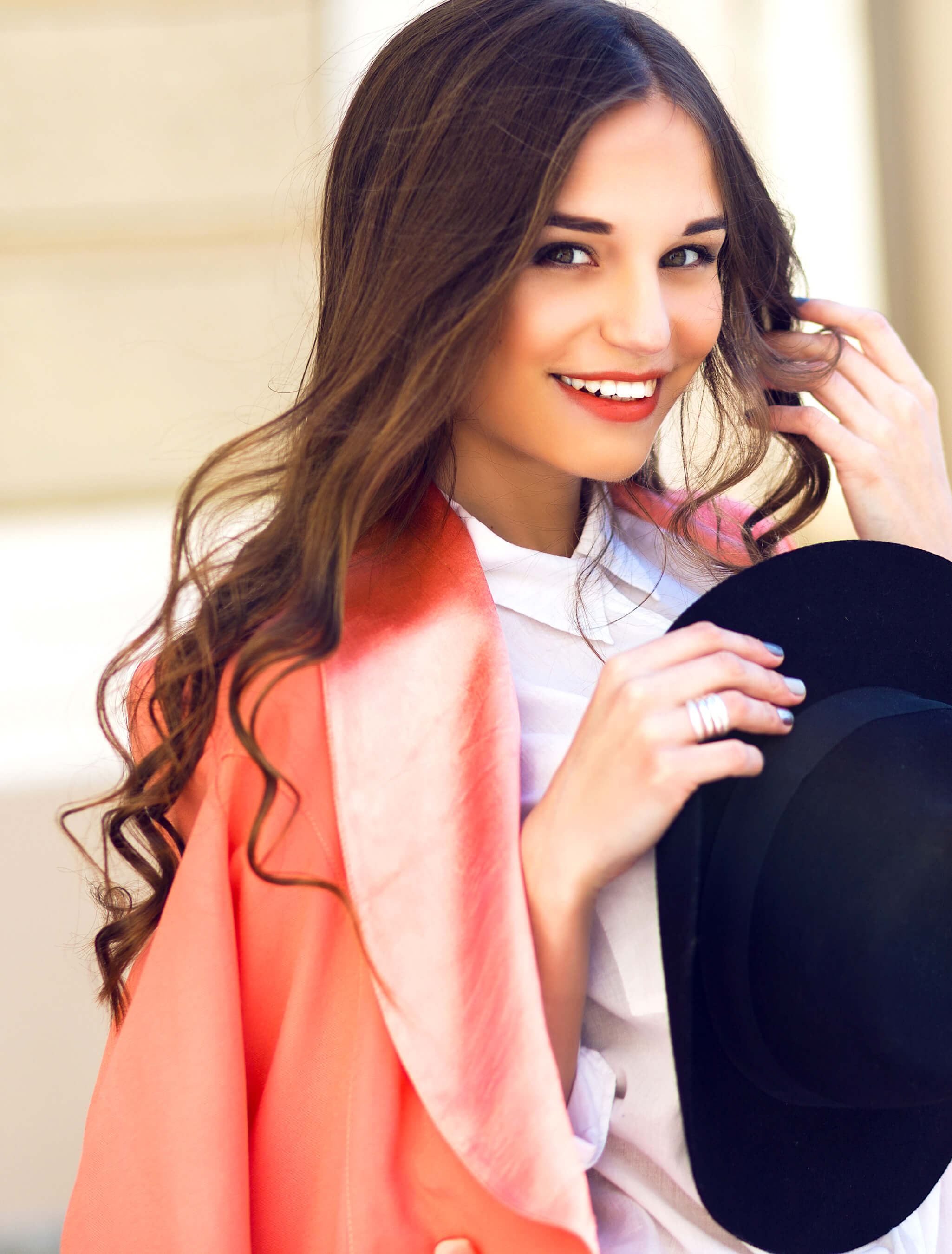
The second type is Type 2B. If this is you, your hair tends to be straighter at the roots, and then turns into more defined waves around eye level.
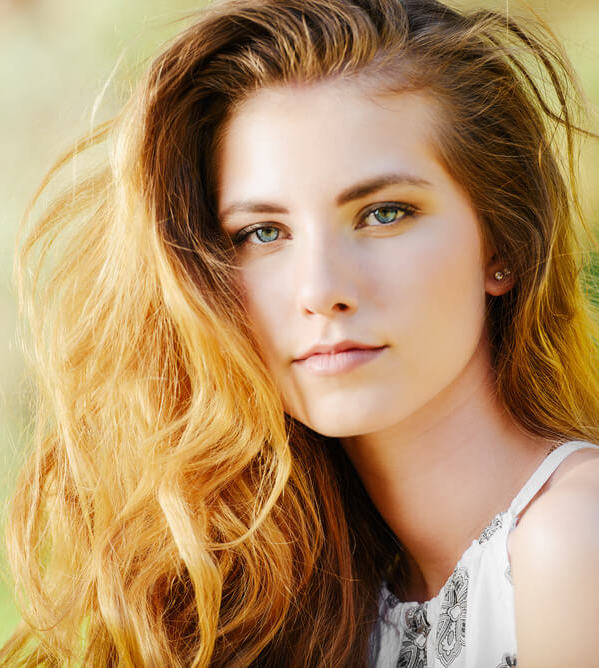
Finally, there is Type 2C. These waves start right at the roots, and are extremely defined, with some intermingled ringlets.
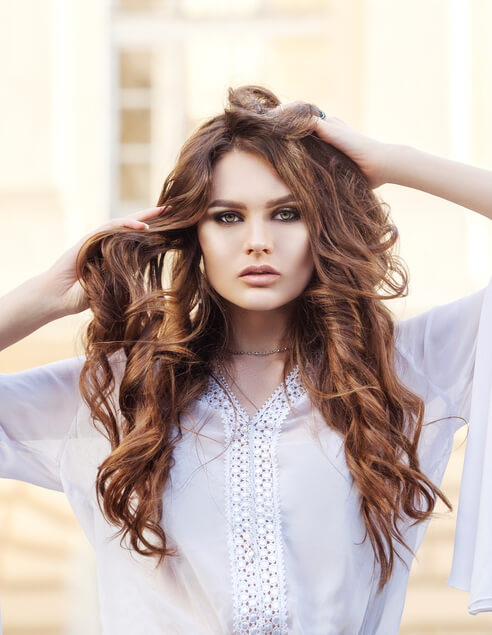
Styling Wavy Hair
When it comes to Type 2A and Type 2B, you should not have too many problems in terms of styling. However, Type 2C tends to be the hardest to style, as this hair type is usually more resistant to tools and products.
One problem that all wavy hair types share is frizz, but this can be controlled with the use of hair products. Make sure that the products you choose not only calm any frizz, but also hold your waves without weighing them down. Try using your fingers to scrunch these products through your hair, as this will help to define your waves a bit more.
A few must-use styling products include:
- Mousses
- Leave-in serums
- Heat protecting products
- Sea salt sprays
Try to avoid using creams or gels as much as possible, and keep your hands away from your hair.
Why?
Beceuse the more you play with it and tousle it, the more it will frizz up.
Curly Hair
Curly hair, also known as Type 3, is full bodied, easily prone to damage, and climate dependent, meaning that the more humidity it experiences, the frizzier it will be.
Just like with wavy hair, curly hair can be split into three further types…
To begin with, there is Type 3A, which refers to larger curls.
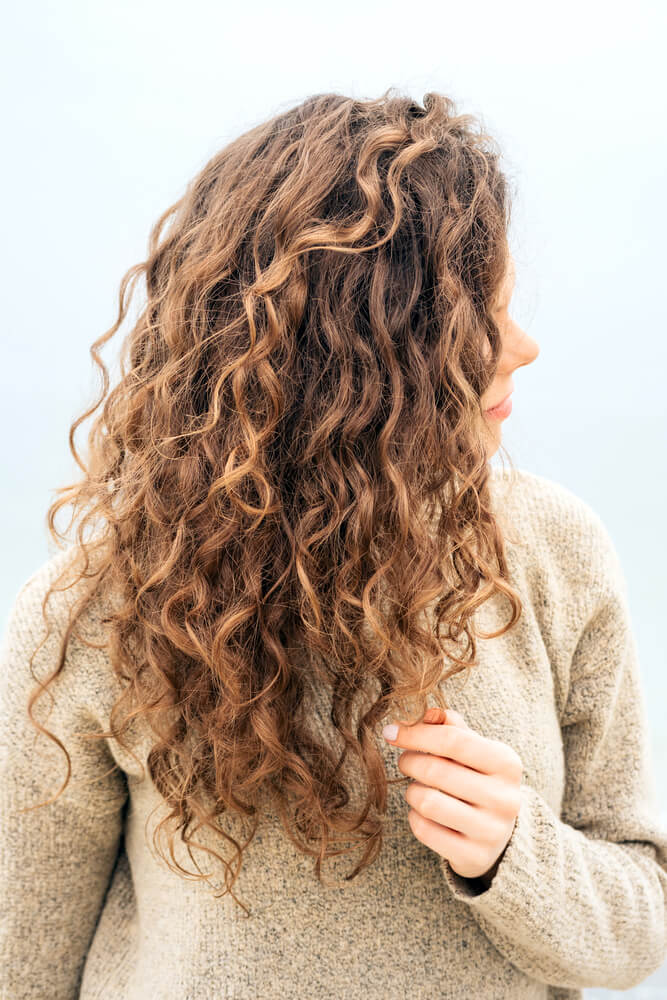
Next up is Type 3B, which would be medium sized curls, about the circumference of a marker pen.

Finally, there is Type 3C, which are tighter, corkscrew curls, and tend to have more volume than the other two curl types.

Styling Curly Hair
Curly hair tends to be the most temperamental type of hair, which can make styling quite the challenge. Using too much product will leave your hair with a greasy sheen, while using too little product will result in a head full of frizz.
To help you to care for and style your curly hair, here are a few tips:
- If you use a conditioner to de-tangle your hair, try using just your fingers instead. This will cause less breakages, and makes the job slightly easier.
- Curly hair is prone to drying out easily, so use a shampoo that is free of sulfates, followed up with a light moisturizing conditioner
- If your sulfate-free shampoo still seems to be too harsh for your hair, try diluting it with a bit of distilled water
- Be gentle when shampooing your hair, working your way through small sections at a time. Make sure that you never rub or scrub at your hair, and avoid piling it all on top of your head while shampooing
- When using styling products on your hair, always make sure that your hair has been cleaned, conditioned and moisturized, so that you are beginning with a fresh palette
While everybody should be deep-conditioning their hair once in a while, those who have Type 3C hair should try to do this once a week, as this will help to retain elasticity.
Another way to retain moisture while reducing frizz is by sleeping on a silk pillowcase. This causes less friction than a cotton pillowcase would each time your hair rubs against it, preventing any snags and bunches from occurring.
If your curly hair seems to get tangled far too easily, it may be worth trying a pre-shampoo treatment. This is a formula that you add to your hair before shampooing it, and can really help to de-tangle your hair after it has been washed.
Kinky Hair
Kinky hair is referred to as Type 4, and this hair type is tightly coiled and wiry. It is also quite fragile and delicate, and, being naturally dry, needs some extra moisture on a daily basis. This helps to give it some elasticity to keep it supple, preventing breakages.
When kinky hair is wet, the curls do not appear to be defined, and then, once it dries, there is quite a bit of shrinkage, and the curls take on a fluffier feel.
Kinky hair can be broken down into three further types…
The first is Type 4A, which consists of small and tight S-shaped curls.
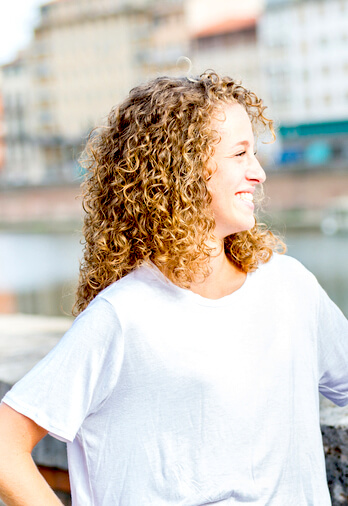
The curls of Type 4B tend to have more of a Z-shape, as well as a softer, cotton-like feel.

Finally there is Type 4C, which still features Z-shape curls, but not in a very defined way. This hair type can be quite varied, being everything from fine and soft to coarse and dense.

Styling Kinky Hair
As mentioned above, kinky hair is extremely prone to dryness, so it does need daily moisture.
The reason for this is because the natural oils that are created by the scalp have a much harder time navigating their way through the kinks and twists of curly hair, compared to the easy path of straight hair.
A few products that you can use on your hair include:
- Moisturizing cleansers
- Hydrating conditioners
- Rich hair creams
- Moisturizing oils, such as jojoba and coconut
- Leave-in treatments that contain humectants
In terms of actually styling your hair, Type 4 curls work really well with braid-outs, twist-outs and updos.
Why?
Because this hair type is actually quite pliable and will hold a style much better than Type 3 curls will.
You could also try a few protective hairstyles, which basically conceal the ends of your hair, so that any breakages are minimized. These styles include mini-twists and pompadours.
When it comes to hair growth, many people with kinky hair feel as though their hair just does not seem to grow fast enough.
However, kinky hair actually grows at the same rate as other hair types, but, since the hair is so tightly coiled, it can take much longer to visually see this added length. You will know that your hair needs a trim when the ends start to tangle together easily.
Curl Porosity
In addition to understanding your hair type, you should also be aware of curl porosity.
This may sound complex, but it isn’t…
It basically refers to the rate at which your hair is able to suck up liquids.
No idea how porous your hair is?
Fortunately, there is a quick test that you can do…
Dunk a bit of hair into a cup or bowl of water, and then see whether it floats or sinks:
- Floats – this means your hair is non-porous, and does not easily absorb product. You need to use heavier creams to help the ingredients sink in, and should be deep conditioning your hair on a weekly basis, as it will need the extra moisture.
- Sinks – this means that your hair is highly porous and will drink up liquids easily. You are best off using lighter products that are water-based, as well as products that are rich in proteins.
- Somewhere in the middle – your hair is likely to be healthy and bouncy, as this is considered to be the ideal porosity. A moisturizing shampoo and conditioner should be all you need to maintain your healthy locks.
Curl Elasticity
As you will have probably guessed, curl elasticity refers to how quickly your curls coil back into place when stretched out.
Why does this matter?
Because if your curls do not coil back quickly or easily, this means that they do not have much elasticity and could do with quite a bit more moisture.
Curl Variance
Another issue that many people with curly hair face is curl variance, meaning that their hair consists of more than one type of curl.
This can make it trickier to style, but there is no reason why you cannot use a bit more product in the sections of your hair that feature stronger curls. You can also use more than one hair product, applying specific ones to the parts of your hair that need them.
Co-Washing
Co-washing is something that many women with curls swear by.
Never heard of it before?
Co-washing stands for conditioner washing, which basically means washing your hair with a conditioner instead of a shampoo.
You are probably wondering why someone would do this…
Well, this is actually a great way to help curly hair retain moisture, without stripping hair of its natural oils. Conditioners do also contain a small amount of cleanser, meaning that they will still be able to wash your hair.
However, if you have naturally oily hair, or suffer from a scalp condition such as dermatitis, then co-washing is something you are best off avoiding.
For everyone else, try co-washing your hair in between regular washes, and see if this makes a difference to how hydrated your hair is.
Straightening Curly Hair
Of course, there will always come a time when you want to mix up your style a bit, and may decide to do this by straightening your hair.
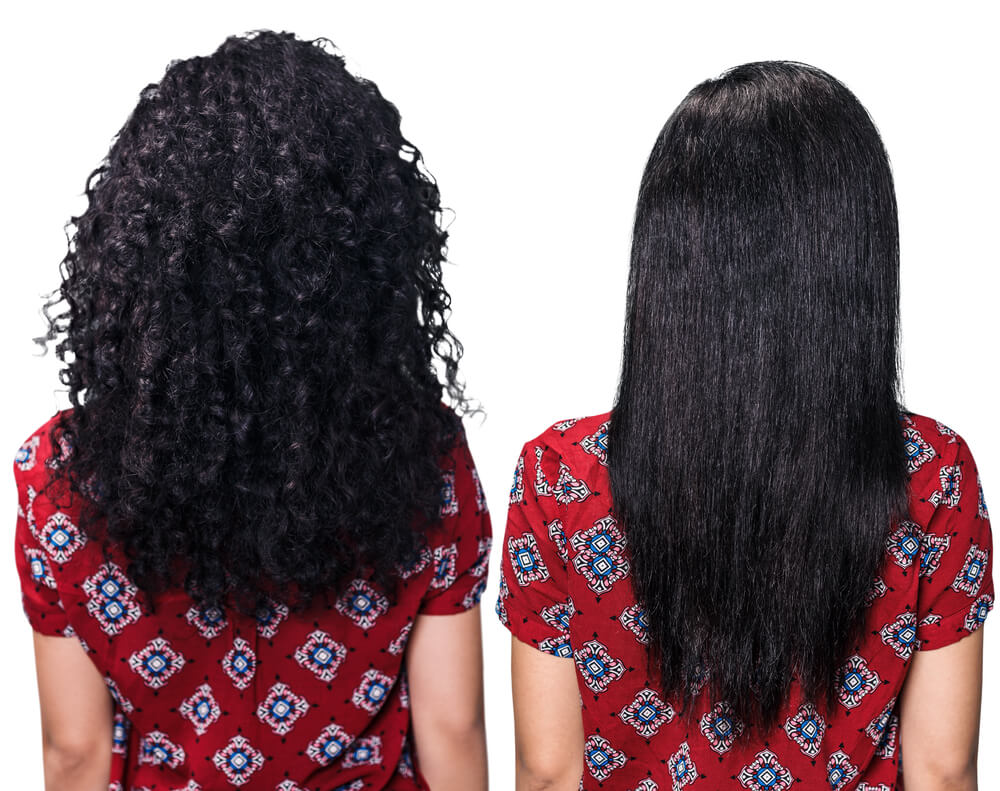
However, if you do not do this with great care, you can end up causing so much heat damage to your hair, some of which may be irreversible.
Here are a few tips to keep in mind when straightening curly hair, no matter which type of curls you may have:
- Make sure that your hair has been moisturized before beginning, and is also completely dry
- Straighten your hair in sections, so that you can properly reach your roots
- Nourish your hair as you go along, either with a heat protection spray or a light oil
- Invest in quality straighteners so that you do not have to repeatedly go over the same section
- Hold your hair taut as you straighten it, because tension is essential when straightening curly hair
- Use a finishing product to add some shine and reduce any frizz
While alternating between straight and curly hair can be fun, you need to try to keep this to a minimum as much as possible.
Why?
Because curly hair is already so prone to damage, which you really do not want.
As long as you keep your hair dry and protected, your straight hair should last for at least a couple of days, after which you should go back to being curly for a while.

